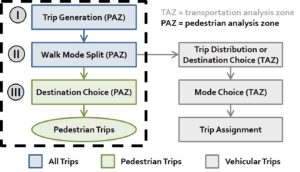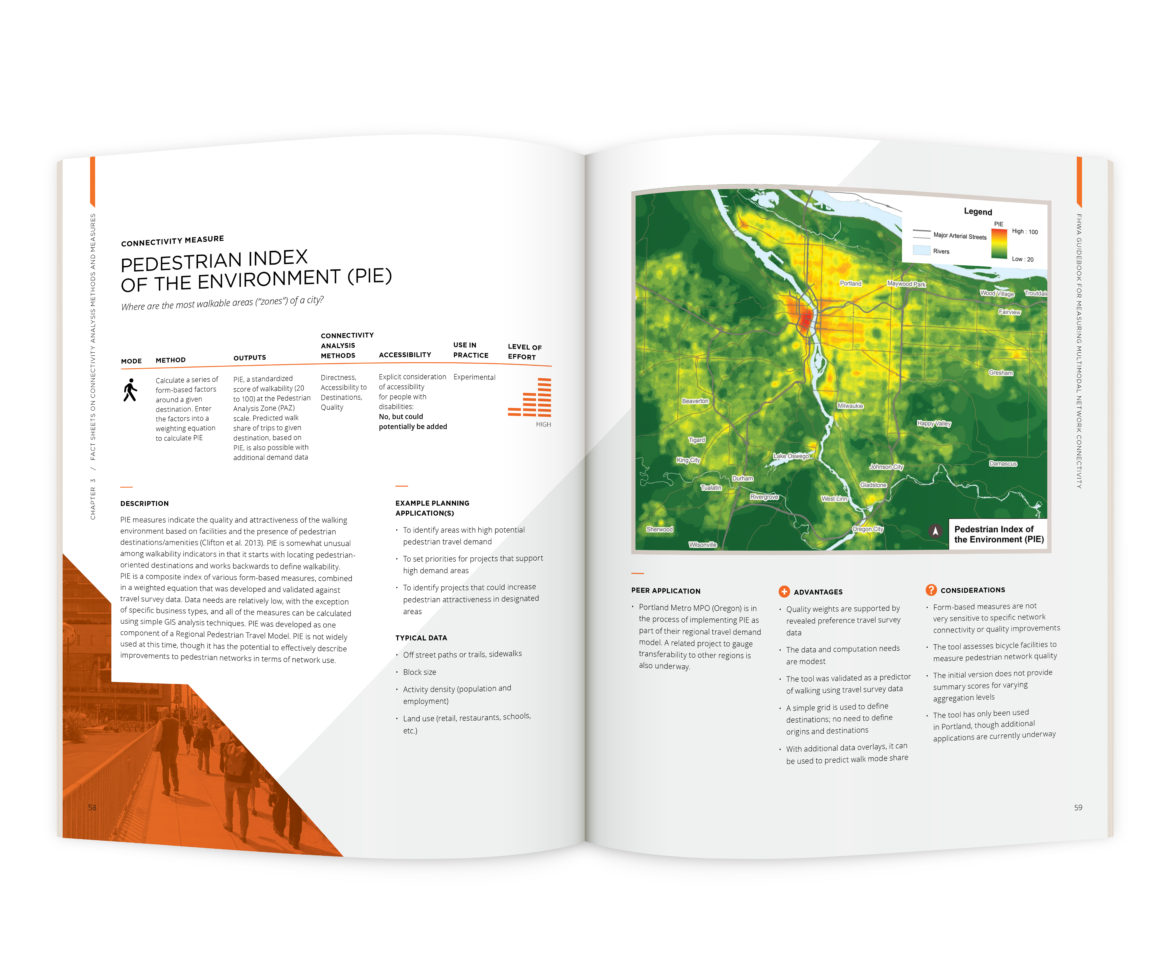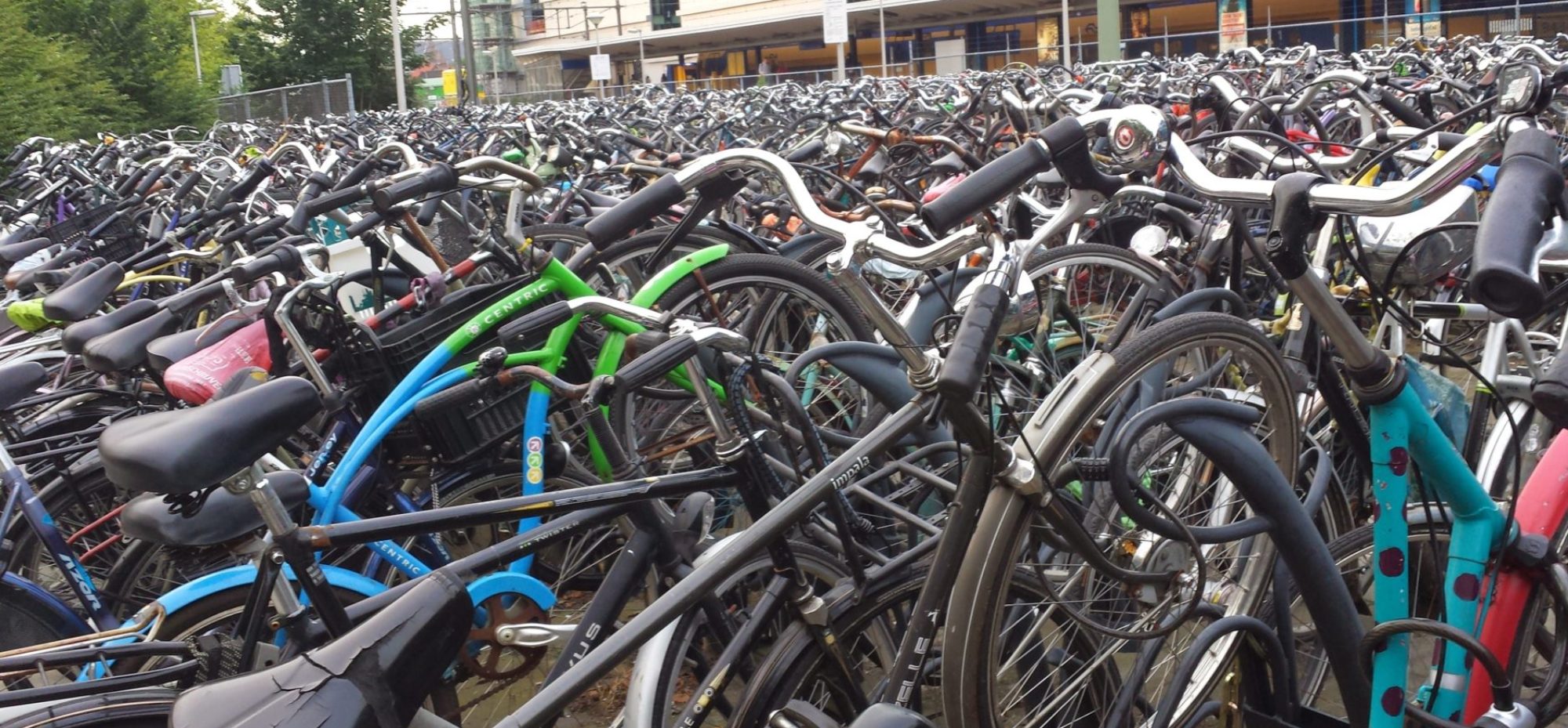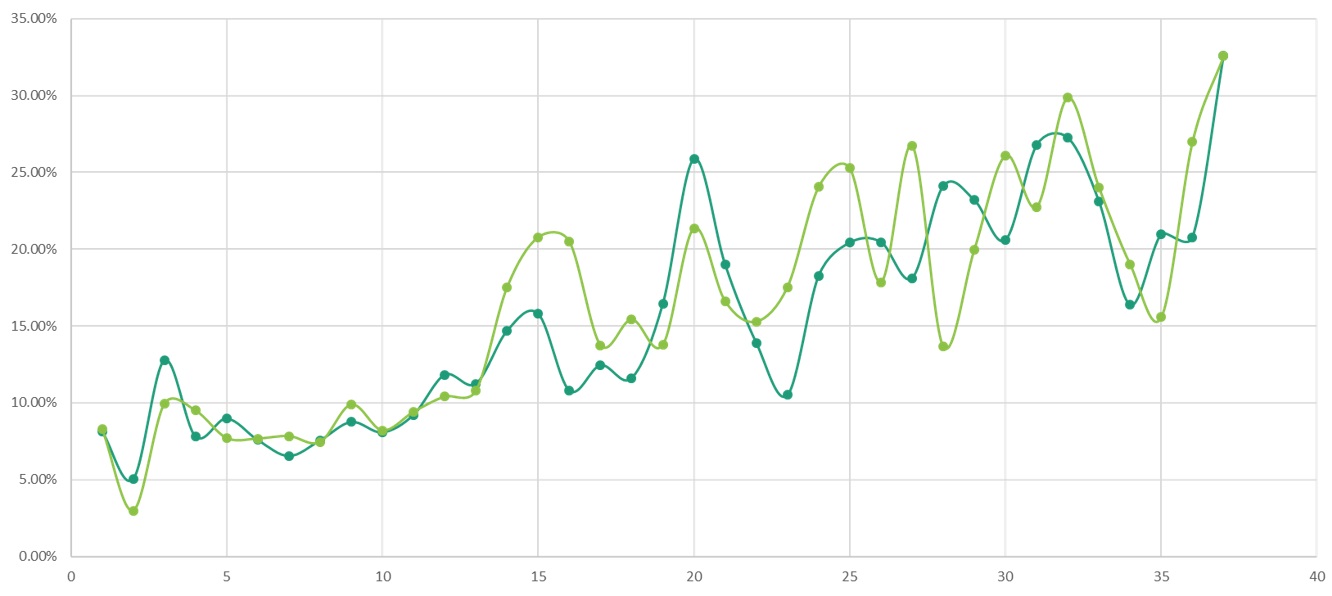
Pedestrian behavior research has made important gains as communities are increasingly interested multi-modal planning to create communities that are accessible, safe, livable, environmentally sensitive, healthy and economically vibrant. But the methods to support these efforts are lacking and less sophisticated than those available for motorized modes. To help remedy this issue, our ongoing research agenda aims to advance pedestrian modeling tools and increase the capacity for public agencies, planners and researchers to estimate various aspects of pedestrian demand.
Projects
To date, we have completed or are engaged in several research projects to advance pedestrian modeling capacity:
- FHWA Guidebook for Measuring Multimodal Network Connectivity
- Incorporating Pedestrians into Land Use – Transport Integrated Models (Technical University of Munich)
- Transferability & Forecasting of the Pedestrian Index Environment (PIE) for modeling applications (NITC)
- Land Use Mix and Pedestrian Travel Behavior: Advancements in Conceptualization and Measurement (PhDdissertation by Steven Gehrke, Portland State University, 2017)
- Development of a Pedestrian Demand Estimation Tool (NITC & Metro)
- Better Representation of the Pedestrian Environment in Travel Demand Models (OTREC & Metro)
- Pedestrian Environment Data Scan (PEDS) – pedestrian audit
- Model of Pedestrian Demand (first generation)(Maryland Department of Transportation)

Publications
Hannah Twaddell (ICF); Eliot Rose (ICF); Joseph Broach (PSU);Jennifer Dill (PSU); Kelly Clifton (PSU); Claire Lust (PSU);Kimberly Voros (Alta); Hugh Louch (Alta); Erin David (Alta). 2018. Guidebook for measuring multimodal network connectivity. FHWA-HEP-18-032, Federal Highway Administration, US DOT.
Singleton, P; Totten, J; Orrego, J.; Schneider, R; and Clifton, K. “Making Strides: State of the
Practice of Pedestrian Forecasting in Regional Travel Models”, Transportation Research Record:
Journal of the Transportation Research Board, Transportation Research Board of the National
Academies, Washington, D.C., 2018. https://doi.org/10.1177/0361198118773555
Singleton, P. A., & Clifton, K. J. Considering health in US metropolitan long-range transportation plans: A review of guidance statements and performance measures. Transport Policy, 57, 2017, 79–89. https://doi.org/10.1016/j.tranpol.2017.02.003
Lefebvre-Ropars, G.; Morency, C.; Singleton, P.; and Clifton, K. “Assessing the spatial transferability of a walkability index: the Pedestrian Index of the Environment”, Transportation
Research Part D: Transport and Environment, 2017 (57): 378-392. https://doi.org/10.1016/j.trd.2017.08.018
S.R. Gehrke, & K.J. Clifton. “A pathway linking smart growth neighborhoods to household-level pedestrian travel”, Travel Behaviour and Society, Volume 7, April, 2017, Pages 52–62. http://dx.doi.org/10.1016/j.tbs.2017.02.003
S.R. Gehrke, & K.J. Clifton. (2017). An activity-related land use mix construct and its connection to pedestrian travel. Environment and Planning B: Urban Analytics and City Science. First published date: January-27-2017, http://dx.doi.org/10.1177/2399808317690157
Clifton, K. J., Singleton, P. A., Muhs, C. D., & Schneider, R. J. “Development of destination choice models for pedestrian travel”, Transportation Research Part A, 2016, 94: 255-265. https://doi.org/10.1016/j.tra.2016.09.017
Blanc, B.; Figliozzi, MA; and Clifton, KJ. “How Representative of Bicycling Populations Are Smartphone Application Surveys of Travel Behavior?” Transportation Research Record: Journal of the Transportation Research Board, No. 2587, 2016, pp. 78–89. http://dx.doi.org/10.3141/2587-10
Clifton, K. J., Singleton, P. A., Muhs, C. D., & Schneider, R. J. 2016. “Representing pedestrian activity in travel demand models: Framework and applications”, Journal of Transport Geography, 2016, Vol. 52:111-122. http://dx.doi.org/10.1016/j.jtrangeo.2016.03.009
Muhs, C & Clifton, KJ. “Do Characteristics of Walkable Environments Support Bicycling? Towards a Definition of Bicycle-supported Development,” Journal of Transport & Land Use, 2016, 9(2): 147-188. http://dx.doi.org/10.5198/jtlu.2015.727
Gehrke, S.R. & Clifton, K.J. 2016. “Toward a spatial-temporal measure of land-use mix.” Journal of Transport & Land Use, 9(1):171-186. http://dx.doi.org/10.5198/jtlu.2015.725
Clifton, Kelly, Muhs, Christopher; Morrissey, Tomás, and Currans, Kristina. “Consumer behavior and travel mode: An exploration of restaurant, drinking establishment and convenience store patrons,” International Journal of Sustainable Transport, 2016, 10(3):260-270. http://dx.doi.org/10.1080/15568318.2014.897404
Gehrke, S.R. & Clifton, K.J. “Operationalizing Land Use at Varying Geographic Scales and its Connection to Mode Choice: Evidence from Portland, Oregon,” Transportation Research Record:
Journal of the Transportation Research Board, No. 2453, 2014, pp 128–136. http://dx.doi.org/10.3141/2453-16
McConville, Megan; Rodríguez, Daniel; Clifton, Kelly; Cho, Gihyoug; Fleischhacker, Sheila. “Disaggregate land uses and walking,” American Journal of Preventive Medicine, vol. 40(1), 2011. pp. 25–32. http://www.sciencedirect.com/science/article/pii/S0749379710005398
Shay, Elizabeth; Rodriguez, Daniel A; Cho, Gihyoug; Clifton, Kelly J; and Evenson, Kelly R. “Comparing objective measures of environmental supports for pedestrian travel in adults,” International Journal of Health Geographics, vol. 8:62, 2009. http://www.ij-healthgeographics.com/content/8/1/62
Rodríguez, DA; Aytur, S; Forsyth, A; Oakes, MJ, and Clifton, KJ. “Relation of modifiable neighborhood attributes to walking,” Preventive Medicine, vol. 47(3), 2008. pp. 260-264. http://www.ncbi.nlm.nih.gov/pubmed/18436297
Clifton, Kelly J., Livi Smith, Andrea D., and Rodriguez, Daniel. “The development and testing of an audit for the pedestrian environment,” Journal of Landscape and Urban Planning, 80(1-2), 2007. pp. 95-110. http://www.sciencedirect.com/science/article/pii/S0169204606001101
Targa, Felipe and Clifton, Kelly J. (corresponding author). “The built environment and trip generation for non-motorized travel,” Journal of Transportation and Statistics, vol. 8(3), 2005. pp. 55-70. http://onlinepubs.trb.org/onlinepubs/archive/conferences/nhts/Clifton.pdf

